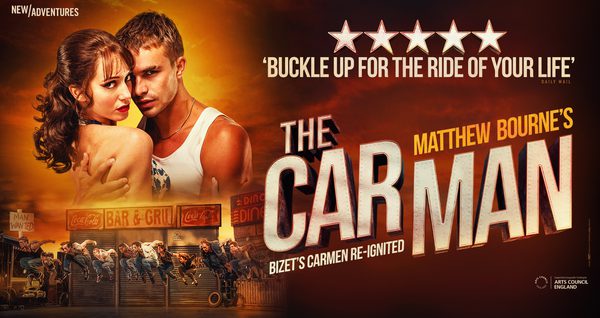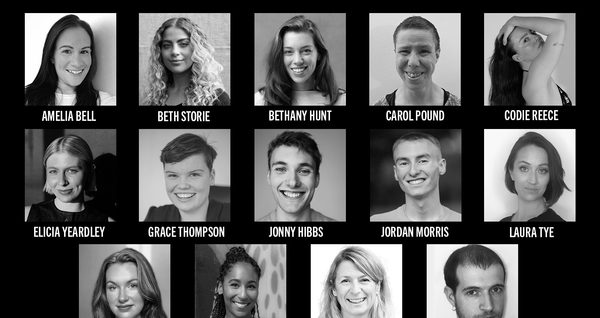From The Stage, Oct 13, 2021 by David Benedict
https://www.thestage.co.uk/opi...
Is it a musical? Well, it’s got songs, but no one sings. So it’s a play? Well, it’s got drama, but no one speaks. What on earth is Matthew Bourne’s The Midnight Bell? Answer: a sensation.
Bourne is, without question, this country’s most theatrical dancemaker, an opinion underlined by him beating Judi Dench to the record for the most Olivier awards for any individual, with an extraordinary total of nine wins. Crucially, he has achieved that across six different categories, with only three awards coming via the specialist dance panel.
Ever since his 1996 breakthrough with the dazzlingly dramatic Swan Lake and its vicious male swans, it has been abundantly clear that Bourne is a visual dramatist, his work written on the body. He uses immensely skilled, expressive dancers but, in every sense, because he’s as much a director as he is as a choreographer, he’s making theatre.
His name is alongside the title of this new piece since few would book for the otherwise unknown title. But if that suggests a dominating ego, the key to Bourne’s work is collaboration.
His collaborators on the thrillingly unclassifiable The Midnight Bell are his company’s associate artistic director and choreographer Etta Murfitt, composer Terry Davies, designer Lez Brotherston, lighting designer Paule Constable and sound designer Paul Groothuis, the last four of whom are also associate artists with Bourne’s New Adventures company. And it’s the ideal meshing of those individual talents that makes the work so transporting.
It’s less a traditional dance work and more a non-singing musical. And, as writers of new musicals will tell you, collaboration is key. Unlike plays, which, with rare exceptions such as No Sex Please, We’re British by Alistair Foot and Anthony Marriott, which ran for 16 years – musicals have multiple authors: composer, lyricist, book writer, choreographer and design team. The reason why so many musicals flop is that it’s extremely hard for everyone to share the same vision and make it legible.
It’s certainly a lot easier said than done. Take Creature, Akram Khan’s latest piece for the English National Ballet. His previous work for the company, Giselle, was mindblowing: a piece of (pardon the cliché) total theatre in which thunderingly original choreography was at one with a wide-ranging score and toweringly effective visuals. Everyone combined to create something that seized hold of audiences and never let them go. But Creature, which is based (extremely loosely) on a mash-up of ideas from Frankenstein and Büchner’s dystopian play Woyzeck, proved to be the spectacle of collaborative artists talking not to audiences but to each other.
Even after reading the programme notes, and despite extraordinary performances, the work’s ideas remained mostly indecipherable. In abstract dance you don’t expect to understand the ‘meaning’ of movement, but when a piece has narrative one should be able to follow most if not all of it.
Illegibility is never a charge laid at Bourne’s door. One of my least favourite terms in theatre vocabulary is ‘storytelling’ – I’m more interested in theatre artists making and showing drama than ‘telling stories’ – but no other term describes The Midnight Bell. Over little more than an hour and a half, audiences are held rapt in an astonishingly sophisticated portrayal of not one but six interconnected relationships from novels by Patrick Hamilton.
Hamilton, today most famous for his play Gaslight, which gave us the now routinely used term for psychological abuse ‘gaslighting’, wrote a succession of wonderfully atmospheric semi-autobiographical, demi-monde novels of decaying hopes and lurid dreams. Bourne plucks tawdry but spirited characters from them and weaves a seductive, mesmerising scenario of love, lust, fear and self-loathing. More remarkably still, the lonesome characters’ sad stories are expressed with warmth.
Is the all-consuming atmosphere down to choreography, Brotherston’s suggestive and never-over-literal set pieces, the colour and control of Constable’s lighting, the contemporary orchestration of Davies’ wildly evocative score or Groothuis’ shiver-inducing soundscape? Or, of course, the acting performances of Bourne’s dancers? The truth is, the work of the entire team is indivisible and utterly complementary: no single input dominates.
Indeed it’s so all-of-a-piece that the most daring idea – the dancers lip-syncing to recordings of songs of the period (I told you there were songs) – immediately feels natural.
It’s yet another extraordinary manifestation of the show’s wondrous collaboration. It’s so dazzling, you could teach from it. Dance-lovers – but, even more so, dance-haters – should rush to catch it on tour. Note to Matthew Bourne: please bring it back as soon as possible.


